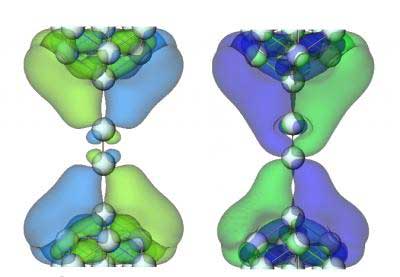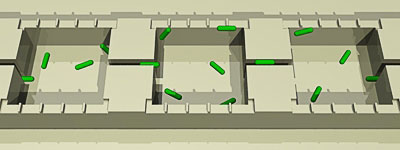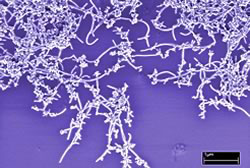'Microsieve' could aid study of diseases
Device promises to speed up separation, sorting of proteins.
Feb 5th, 2007
Read more
Device promises to speed up separation, sorting of proteins.
Feb 5th, 2007
Read moreA forum for analysing future-oriented technology has been launched by the Institute for Prospective Technological Studies of the European Commission's Joint Research Centre.
Feb 5th, 2007
Read moreResearchers used a High Resolution Electron Microscope to observe in real-time the collective transportation of gold atoms in a thin layer.
Feb 5th, 2007
Read moreScientists exploring the physics of hearing have found an underlying molecular cause for one form of deafness, and a conceptual connection between deafness and the organization of liquid crystals, which are used in flat-panel displays.
Feb 5th, 2007
Read more How and why the electrical conductance of metal nanowires changes as their length varies.
How and why the electrical conductance of metal nanowires changes as their length varies.
Feb 5th, 2007
Read moreThe layers of mucus that protect sensitive tissue throughout the body have an undesirable side effect: they can also keep helpful medications away.
Feb 5th, 2007
Read moreUsing a novel polymer that becomes unstable under the pH conditions inside tumor cells, scientists have developed a core-shell nanoparticle targeted to deliver drugs to tumors.
Feb 5th, 2007
Read moreBy taking advantage of the unique optical and other physical properties of nanoscale materials, researchers have created a veritable toolbox of nanoparticle probes.
Feb 5th, 2007
Read more Ten university projects received grants from the EPA for research to develop better methods for detecting harmful organisms in drinking water.
Ten university projects received grants from the EPA for research to develop better methods for detecting harmful organisms in drinking water.
Feb 3rd, 2007
Read moreU.S. company appears to have gained a significant legal victory in a dispute over a carbon nanotube patent.
Feb 2nd, 2007
Read moreA conference in Washington, DC next week.
Feb 2nd, 2007
Read moreA Finnish-Japanese joint research project has discovered a phase transition in the structure of crystalline materials in atomistic simulations.
Feb 2nd, 2007
Read moreMIT reports that the source of concrete's strength and durability lies in the organization of its nanoparticles. The discovery could one day lead to a major reduction in carbon dioxide emissions during manufacturing.
Feb 2nd, 2007
Read moreA new process for creating patterns of individual molecules on a surface combines control of self-assembled monolayers and a soft-lithography technique known as microcontact printing.
Feb 1st, 2007
Read more Scientists have fashioned a living, changeable ecosystem out of a tiny chip of silicon.
Scientists have fashioned a living, changeable ecosystem out of a tiny chip of silicon.
Feb 1st, 2007
Read more A sensitive new method for rapidly assessing the quality of carbon nanotubes.
A sensitive new method for rapidly assessing the quality of carbon nanotubes.
Feb 1st, 2007
Read more